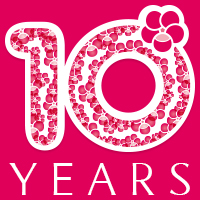


Centella asiatica, Gotu Kola, or Hydrocotyle asiatica L., is a herbaceous plant of the Apiaceae family. It is originally from Asia and Oceania where it is very popular.
Indeed, it is a powerful skin conditioner and regenerator. It tones and firms the tissues. It is incorporated in many healing and restorative treatments. Historically, it has been used as a poultice to treat lesions caused by leprosy as well as to limit the manifestations of psoriasis. A specialty, called Madécassol is marketed by Bayer as a healing cream.
In Chinese and Ayurvedic medicine, it has also been used since the dawn of time as an aphrodisiac, anxiolytic and to increase longevity. Its most important active ingredients are triterpenes such as asiaticoside and madecassoside.
Centella asiatica improves wound healing, including burns, by acting on fibroblast proliferation and collagen synthesis. Its triterpenes increase re-epithelialization and reduce inflammation around wounds (PARK, 2021 ; SUN & al., 2020). It also accelerates the contraction of wounds. Asiaticoside increases angiogenesis in vivo and in vitro and facilitates wound healing. Its anti-inflammatory effect also contributes to improving wound healing (GOHIL & al., 2020 ; AHMED & al. , 2019).
An emulsion containing 5% Centella asiatica extract increases the hydration of the stratum corneum by 12% and a hydrogel containing the same amount of plant increases its hydration by 10%, compared to a control and a placebo. After 4 weeks of treatment with these two solutions, the hydration of this skin layer increases to 25% and 22% respectively. As is indeed well known, hydrated skin heals better (RATZ-LYKO & al., 2016).
In a 2019 rabbit experiment, application of a hydrogel rich in asiaticoside increased wound healing by 40% compared to an untreated wound. This molecule induces faster epithelialization compared to wounds treated with a neutral hydrogel (AHMED & al. , 2019).
Centella asiatica reduces inflammation at skin level by decreasing the production of NF-Kappa-B, TNF-α, IL-8, IL-13, IL-4 as well as the production of Ig-E. In a 2019 study, Lee et al. demonstrated that Centella asiatica applied orally and to the skin showed significant activity on atopy in mice. They observed a decrease in the production of pro-inflammatory cytokines, thickening of the skin and infiltration of mast cells (PARK, 2021 ; SUN & al., 2020 ; GOHIL & al., 2020 ; LEE & al. , 2019).
The application of a hydrogel or an emulsion containing Centella asiatica extract reduces skin erythema and reduces the skin’s sensitivity to irritants (RATZ-LYKO & al., 2016).
Asiaticoside decreases the activity of cyclooxygenases, lipoxygenases and inhibits pro-inflammatory cytokines, even when applied to the skin (RATZ-LYKO & al., 2016).
Madecassoside has a beneficial effect on vitiligo. This property is attributed to its antioxidant and protective effect on mitochondria (SUN & al., 2020). In rats, oral intake of Centella asiatica improves oxidative status. This has been shown in several studies using different tests (GOHIL & al., 2020 ; LEE & al. , 2019).